Two Englishmen came to Malta in 1968 and introduced a new craft that has evolved into a tradition.
There is a misconception among us locals that glass-making is one of our ancient crafts, inherited from distant ancestors over the generations. In reality, glass-making was first introduced to Malta only half a century ago by two English men who responded to an advert from the government of the newly independent Malta for entrepreneurs to start new businesses on the island. It was thus Mdina Glass was born.
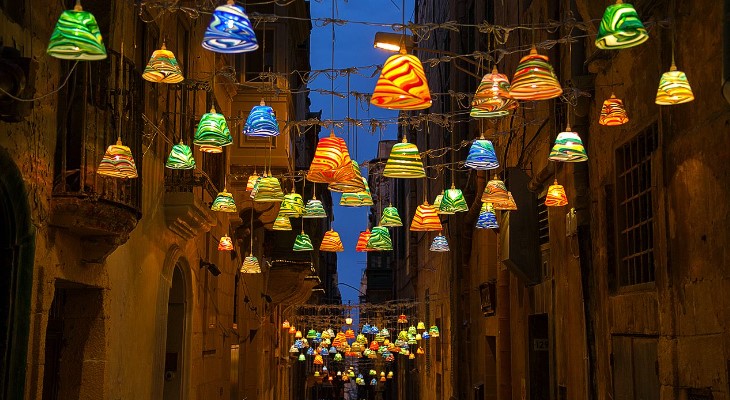
Mdina Glass
Over the years, through many ups and downs, the company established itself in our consciousness as a tradition synonymous with the island, creating a legacy of craftsmanship, colour and design the likes of which Malta had never seen before.
And it is that very legacy that is being celebrated in a new, limited edition book written by Mark Warner to commemorate the 50th anniversary of the founding of Mdina Glass, 'LEGACY: 50 Years of Mdina Glass'. Three years in the making, the beautifully illustrated book traces the history of the company from the early days when its workshop was touted as “one of Malta’s most fascinating sights” to the present day.
Mark dug deep into Mdina Glass’ archives and interviewed several of the company’s past employees and collaborators, including one of the founders - Eric Dobson - to piece together the story of the company. The book is packed with heartwarming stories of loyal employees recruited from the surrounding area who learnt the skill from scratch and spent the rest of their working life honing it into an art form.
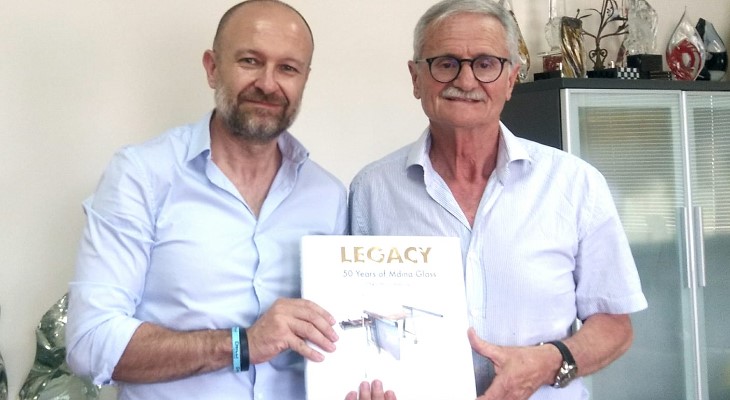
Mark Warner (left) with Joseph Said, owner of Mdina Glass
“When Eric Dobson and Michael Harris first thought of a location for a glass-making business, Malta didn’t even feature on their initial shortlist,” explains Mark. Just as the pair were contemplating setting up their new venture in Greece, Spain or the South of France, Dobson happened to spot an advertorial in the Daily Telegraph outlining the Maltese government’s offer of generous capital or corporation tax holidays. This was 1967, a mere three years after Malta had become an independent state following 150 years as a British colony.
Neither of the two had ever set foot on the island, but the government’s fiscal incentives coupled with the idea of a more laid-back lifestyle in a warmer climate proved very attractive. A visit to Malta soon followed, and both men quickly decided this was the ideal place for their glass-making business.
The government was “helpful and responsive” and even earmarked the 17th century St Thomas Tower in Marsascala in which to house the glass-making workshop. This offer would later be retracted as the government soon decided that such a historic building was not suitable for industrial use. Harris and Dobson were later offered the use of a vacant Royal Air Force hangar in what was then the disused airfield of Ta’ Qali, just below Mdina.

Mdina Glass Archives - workshop general view mid-to-late 1970s
At the time, this was considered “off the beaten track”, or as remote as one can get on an island the size of Malta. There wasn’t any running water or electricity serving the structure or the immediate area. Nonetheless, the hangar felt “right” from the start for Dobson, and that is where Malta Glass Industries, as it was then known, began. Half a century later, that hangar is still its home.
Right from the start, Harris and Dobson were inspired by the Maltese Islands in their choice of colour accents for the first Mdina Glass ranges. The distinctive blue-green, inspired by the sea and the sky, has now become iconic. The rich yellow ochre reflected the sandy beaches and of course, the ubiquitous golden limestone.
It was in those early days, just a few months after the furnaces were first fired up at the Ta’ Qali hangar, that a 19 year old from Rabat, Joseph Said, joined the company. In his job interview, Dobson asked him what he could do. “Nothing much,” the young man honestly answered. But his knowledge of Italian helped him secure the job after translating a letter for Dobson. An admin job was offered, but Said had already set his sights on the far more exciting work on the factory floor. And that’s where he ended up. He was a fast learner and progressed quickly to become the company’s first Maltese production manager in 1975. Today, that Rabat lad who couldn’t do much is the owner and managing director of Mdina Glass.
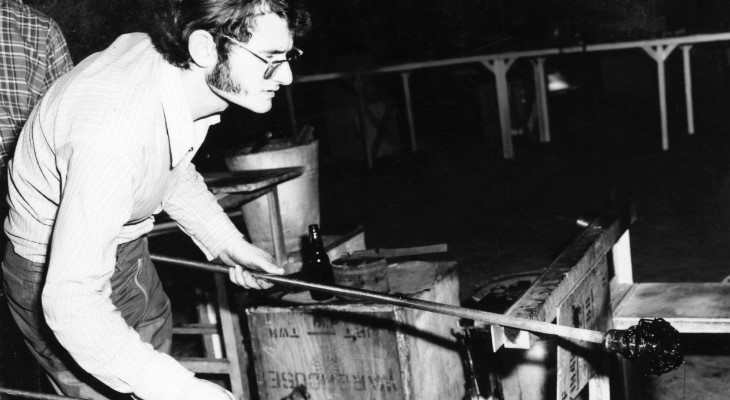
Mdina Glass Archives - Joseph Said applying a trailed pattern to a piece 1969/1970
The first items produced by the company were small and purposely designed to fit into tourists’ luggage, even though tourism was still in its infancy at the time. Interestingly, locals showed little interest initially, as they considered the glass objects as being purely tourist souvenirs. Today, those early designs are collectors items, and the Maltese have learnt to appreciate the craftsmanship involved.
The arrival in 1969/1970 of Ettore Boffo, an experienced Neapolitan glassmaker then working for the famous Whitefriars company, and later his father Vicente (or “Papa” as he was affectionately known) launched Mdina Glass into a halcyon period of production and creativity. With the two master glassmakers on board, the local trainees progressed in leaps and bounds.
Harris would eventually leave the company and in the recession years of the early 1980s, with tourism in decline and the price of raw materials on the up, lay offs followed. Joseph Said too left to set up his own company, Mtarfa Glass. By 1985, after 17 years at the helm, Dobson felt it was time to move on. Said stepped in and bought the company, and the rest is 'legacy'.
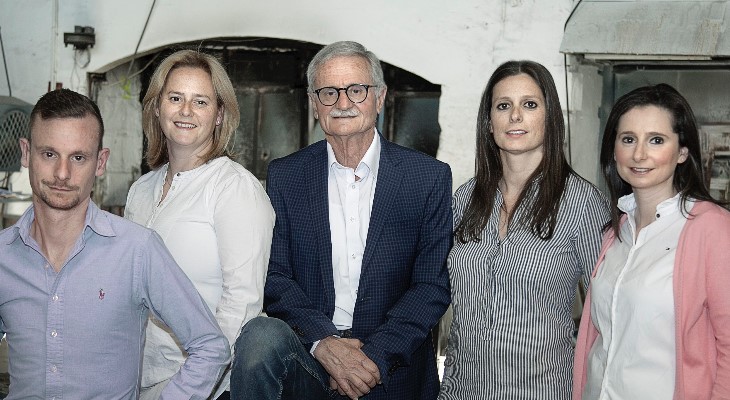
Mark Warner - The Said family: (L to R) Alan, Nevise, Joseph, Olivia and Pamela.
Today, with Said’s children involved in the the running of the business, Mdina Glass looks poised to ride the wave of its success and look forward to the next half century. The range has expanded over recent years to include household items such as light fittings and crockery, combining decorative artistry with functional practicality but always in those vibrant, dynamic and joyful colours. “Diversification has been fundamental in the company making it so far at a time when others are struggling,” points out Mark.
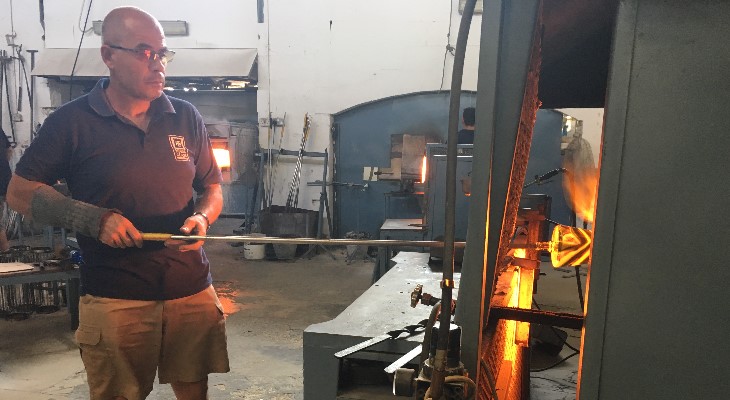
Adriana Bishop
With its core group of 12 glassmakers who have been with the company for decades, Mdina Glass is now facing the challenge of recruiting the next generation. “It is very difficult to recruit new staff. No one is training glassmakers locally, and not many are attracted to this line of work as it is physically very demanding,” admits Mark. “Moreover, materials and fuel costs are now astronomical.”
On a more positive note, the company is looking into renovating its Ta’ Qali workshop and retail outlet to improve the visitor experience, and there are plans for a museum too. In the meantime, that workshop in the 'off-the-beaten track' hangar remains the beating heart of Mdina Glass, where the dedicated team of craftsmen work in a seemingly choreographed dance around each other, buffeted by the roaring furnaces blasting scorching heat as they blow, mould, shape and form molten glass into works of art. A truly fascinating sight.
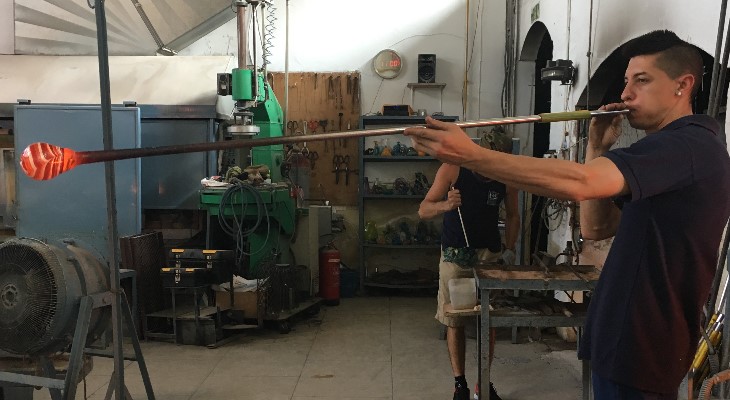
Adriana Bishop